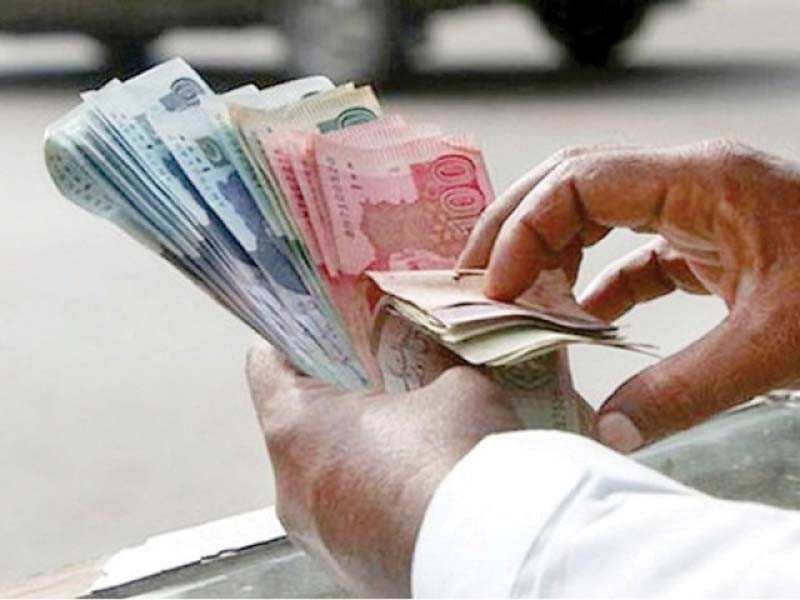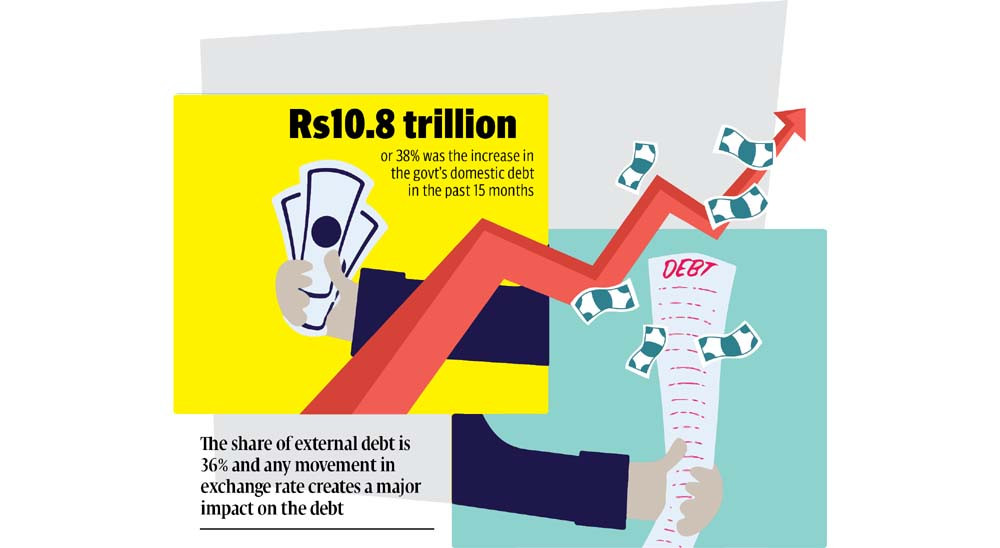
In an alarming development, the Pakistan Democratic Movement (PDM) government added Rs18.5 trillion to the public debt in just 15 months, which was more than the debt accumulated by its arch-rival Pakistan Tehreek-e-Insaf in its three-and-a-half-year tenure, reveals a central bank statement.
Gross public debt jumped from Rs44.4 trillion in March 2022 to Rs62.9 trillion by the end of fiscal year 2022-23, according to the monthly debt bulletin of the State Bank of Pakistan (SBP). The debt in a short period of mere 15 months increased at a pace of 41.7% amid absence of any credible strategy to contain it. As a result, the federal government debt, which is the direct responsibility of the finance ministry, jumped to Rs60.8 trillion by the end of June 2023. There was an addition of Rs18 trillion in one year and three months’ rule of the PDM government, according to the debt bulletin released on Wednesday.
The public debt has been multiplying at an unsustainable pace due to uncontrolled expenditures, below potential revenue collection from sectors like real estate, services and agriculture and the sinking rupee against the dollar.
The government of former prime minister Imran Khan had added Rs18.1 trillion to the public debt during its 44-month rule, a threshold that the administration of PM Shehbaz Sharif exceeded in just 15 months. Debt figure for July has not yet been compiled by the central bank.
The pace at which the public debt is mushrooming can be gauged from the fact that the Pakistan Peoples Party (PPP) and the Pakistan Muslim League-Nawaz (PML-N) added Rs18 trillion to the debt stock from 2008 to 2018.
Another Rs18 trillion was added from August 2018 to March 2022 by Imran Khan’s government. And now the PDM government added Rs18.5 trillion in just 15 months.
From September 1, 2018 to the end of March 2022, the PTI government on average added Rs14.5 billion per day to the public debt, which was more than double the PML-N period’s average increase of Rs5.6 billion a day.
Now, the PDM government added on average Rs41 billion per day to the debt stock. When the PTI government’s term ended, the total public debt stood at Rs44.4 trillion, which was equal to 83.5% of gross domestic product (GDP) before the rebasing of economy. After rebasing, the public debt decreased by 15% of GDP but there was no reduction in absolute terms.

design: mohsin alam
The public debt is equal to 74.3% of GDP. Steep currency depreciation also contributed to the federal government’s debt. The federal government’s total domestic debt increased to Rs38.8 trillion, an addition of Rs10.8 trillion (or 38%), in the past 15 months. When Imran Khan left the government, the domestic debt stood at Rs28 trillion.
External debt of the federal government rose at an alarming pace of 48% to Rs22 trillion in 15 months. There was a net increase of Rs7.1 trillion in the external debt, largely due to currency depreciation. At the end of March 2022, the external debt stood at Rs14.9 trillion, excluding the IMF’s liabilities.
The share of external debt in the total debt is roughly 36% and any movement in the exchange rate creates a major impact on the debt without even borrowing a single dollar.
In March 2022, the rupee-dollar parity was at Rs183.5 to a dollar, which depreciated to Rs286.4, a drop of Rs103, or 56%, in a span of just 15 months. Such a large and steep depreciation has also fueled inflation in the country.
The rupee further sank to Rs295 on Wednesday. A direct consequence of the mounting debt pile is a huge increase in the cost of debt servicing. The debt servicing is expected to stay above Rs5.8 trillion by the end of last fiscal year.
Due to reckless borrowing, Pakistan’s total debt and liabilities have now increased to Rs77.1 trillion, or equal to 91.1% of the size of national economy. For a developing country like Pakistan, any ratio above 50% is unsustainable.
During the past four years of the IMF programme, Pakistan failed to increase the FBR’s tax-to-GDP ratio that further deteriorated despite being a priority of the IMF and the World Bank. This also raises questions over a failed strategy to take foreign loans from international creditors in the name of tax reforms. There have not been serious efforts to contain expenditures and the government of Shehbaz Sharif, like its predecessors, kept spending on projects and initiatives that were provincial subjects under the constitution.
Published in The Express Tribune, August 17th, 2023.
Like Business on Facebook, follow @TribuneBiz on Twitter to stay informed and join in the conversation.


















COMMENTS
Comments are moderated and generally will be posted if they are on-topic and not abusive.
For more information, please see our Comments FAQ